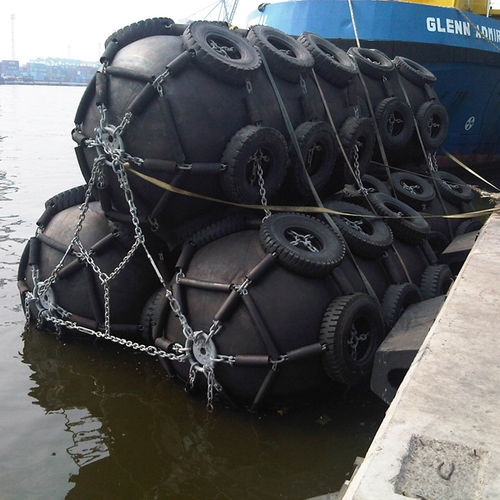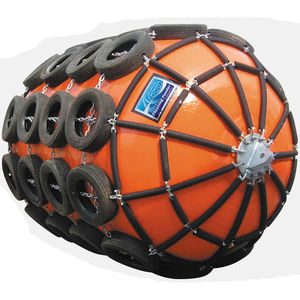
Ship fender for pontoonYokohamainflatable
Add to favorites
Compare this product
Characteristics
- Application domain
- for ships
- Applications
- for pontoon
- Configuration
- Yokohama
- Other characteristics
- inflatable
Description
Pneumatic Rubber fenders have been in use for around 50 years. The development of the Pneumatic Fender has progressed through the years in conjunction with the changing shapes, designs and size of ships and ship technology. These days Pneumatic Fenders are widely used in the off-shore transfer of oil and other chemicals. For gas, bulk, car and passenger carriers and on many installations of floating structures, pontoon and off-sore platforms.
Pneumatic Fenders are constructed of three vulcanized layers each providing an important function in the construction and lifespan of the fender. The three layers are (1) the inner rubber layer (2) the cord layers of reinforcement and (3) the outer rubber layer.
The outer rubber layer has a special compound that provides extra tensile and tear strength to protect the fender from harsh weather conditions and heavy usage whilst the inner rubber layer is specifically designed to seal the air inside and to prevent any leakage much like the inner tube of a tire. The reinforcement layer has cross hatched synthetic tire cord designed to evenly distribute the stress. - -
By sandwiching the reinforcing cord layer between the inner and outer rubber layers it is protected from abrasion and degradation from outside forces. The reinforcement is specifically designed to be pressure holding and fatigue resistant.
Catalogs
No catalogs are available for this product.
See all of DockGuard Ltd‘s catalogs*Prices are pre-tax. They exclude delivery charges and customs duties and do not include additional charges for installation or activation options. Prices are indicative only and may vary by country, with changes to the cost of raw materials and exchange rates.


